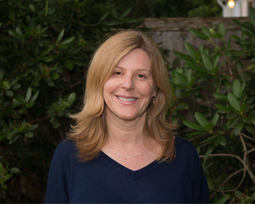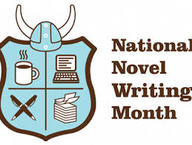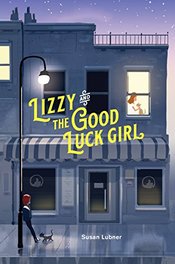 Guest Blog by Susan Lubner Please welcome picture book and middle grade novel author Susan Lubner to the 24 Carrot Writing blog. We are excited that Susan is joining us as a guest blogger to share the process that brought her latest middle grade novel, Lizzy & the Good Luck Girl (Running Press Kids, 2018) from idea, to completed manuscript, to its launch onto bookshelves this month. Welcome Susan! A funny thing happened to me after I sold my middle grade novel Lizzy and the Good Luck Girl. After I posted the good news on Facebook in July 2017, a writer friend congratulated me and said, “Boy, you work fast!” A little more than a year had passed since we had taken the same eight-week writing workshop together. I explained to her that I had started the book before the workshop. I didn’t mention that at one point I wondered if I’d ever finish it. But her comment got me thinking… how long had it actually taken me? And what were some of the strategies I used that finally got me to the end?  The first saved document for “Lizzy” was dated October 2014. It included a whole bunch of vague notes and a character with a name I now don’t recognize. By October 2015 I had the start of a disjointed meandering story. In November 2015, I signed up to participate in NaNoWriMo for the first time ever. I was scared to death.  Turns out that November was a month of firsts for me. NaNoWriMo of course, and I bought an egg timer in earnest. I set limits for breaks. And timed uninterrupted writing sessions. Never before had I given myself a deadline to write anything. And here I committed myself to completing a first draft in a month. I wished November had 31 days. Thanks to fortitude and my ticking timer, I completed NaNoWriMo. Now I had a much longer disjointed, meandering story that had no ending. Still, I was elated I had something to work with. My main character was nicely developed, an arc was rising. Sub plots had been added. I was excited to dig in and start rewriting. Without a doubt I would find my elusive ending. By May 2016, with trusty egg timer keeping me focused, and my equally trusty critique partners providing feedback, my manuscript was chugging along. I signed up for that eight week writing workshop. Week six was all about endings and I still needed one. I spent most of the summer using the wonderful info I culled from the workshop; chopping, tightening, and polishing. But when summer ended, my story still had not. In September 2016, I headed to Sequim, an area in Washington State for a five day retreat with my agency. They dubbed it camp ECLA (Emerald City Literary Agency). Although I am a fourth generation “Maniac”, being from Maine did not negate the fact that I hated summer camp. That four-letter word brought back fearful flashbacks of my eleven-year-old self as a reluctant camper: dark woods; nervous to make friends; being forced to jump into a freezing cold lake; cabins with spiders and flimsy doors that didn’t lock (what if a bear came in?). Turns out for me adult writing camp is a whole lot better than summer camp in the 70s. My agency-mates who I met for the first time were so friendly and beyond awesome! The cabins had doors with locks (and a kitchen…and a gorgeous view of the lake which I wasn’t forced to jump into!). And the whole time I was there I only saw one spider, and it was pretty small. One by one I checked off each little box on my get-over-your-idiotic-fears-Susan list I was keeping inside my head. I had one box left to check. I still needed to find my ending. On an evening just before sunset, my agent and I, each sipping adult-camp drinks, sat outside and discussed my unfinished novel. “What’s at the heart of your story?” Linda asked me. “What does Lizzy want?” “A sign that everything will be OK,” I answered. “What does she really want?” she pressed. “To feel safe,” I said. Linda asked for more. I answered again. But she wanted more. Deeper and deeper I dug inside my character’s heart. Until she asked, “What do you want? What’s inside your heart?” I stopped to think. I always dug deep inside my character to get to the want. I don’t remember ever having to dig inside myself. Sure there were pieces of me in the stories I’d written over the years. My Maine settings, my love for animals. But my stories were only slightly salted with my truths. This was Lizzy’s story, not mine! As the sun was setting and my fear of being in the dark woods was rising, I realized that I couldn’t write that ending until I figured out exactly what Lizzy wanted. The heart of my story was missing. Was it somewhere I hadn’t looked? Inside of me as Linda suspected? On the flight back to Boston, I thought about the loss I had experienced when I was Lizzy’s age—when my dad passed away. It was different from her experience of losing an unborn sibling. But like Lizzy, during that difficult time, I too had looked to the universe for a sign that everything would turn out okay. It was a way to cope. A way to feel hopeful. And there it was.  Lizzy and the Good Luck Girl is a story about family, love, friendship, and at its heart, the power of hope. It’s my fifth published book out of dozens unpublished. But writing this book, I learned that sometimes it’s important to step out of my comfort zone to get where I need to go: challenging myself with NaNoWriMo; setting a strict regimen of timed writing periods; attending a retreat that at first gave me pause and taking a hard look inside myself rather than my character to find the heart of a story. All of these were firsts for me. All of them crucial to creating this book. By early 2017, I had a polished manuscript ready to send off to my agent. I decided to wait until February 14, to submit it to her. Valentine’s Day might be a good sign that she and the right editor would love it. I hoped. I wasn’t disappointed. To purchase Lizzy and the Good Luck Girl go to Barnes and Noble at www.barnesandnoble.com/w/lizzy-and-the-good-luck-girl-susan-lubner/1128113191 or visit Indie Bound at www.indiebound.org/search/book?keys=lizzy+and+the+good+luck+girl .
To learn more about Susan and her other books, visit her website at www.susanlubner.com/Home.html .
4 Comments
Angie Quantrell
11/5/2018 09:48:30 am
Love how you've showed the struggle to get to the END. Congratulations! Can't wait to read it. :)
Reply
Shannon Sansonetti
11/9/2018 02:34:35 pm
I love your blog post Susan! Was so happy to get my pre-ordered book in the mail and will read it to my Shaela as soon as we are finished with the book we are reading now!
Reply
Leave a Reply. |
Peruse blogs for advice and tips from KidLit creatives.
Categories
All
Archives
April 2024
Click to set custom HTML
Click on the RSS Feed button above to receive notifications of new posts on this blog.
|


 RSS Feed
RSS Feed